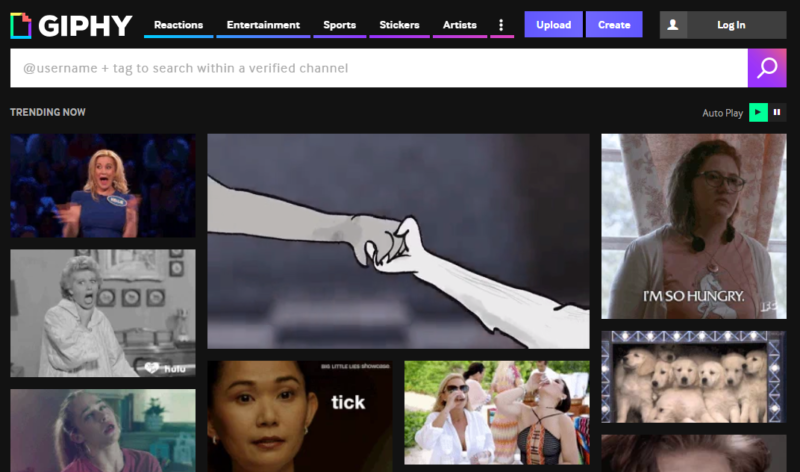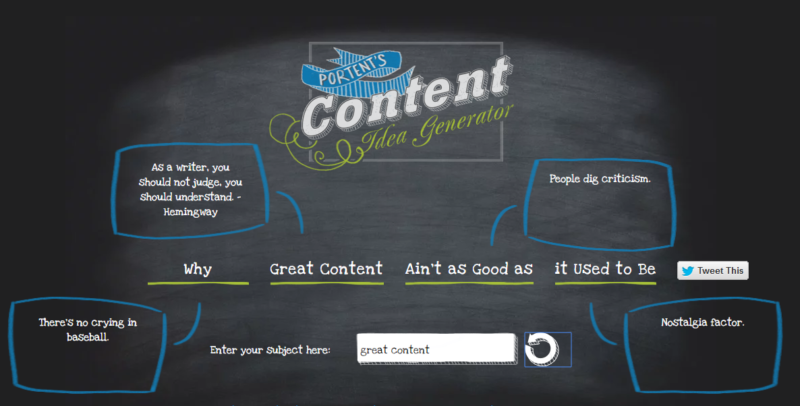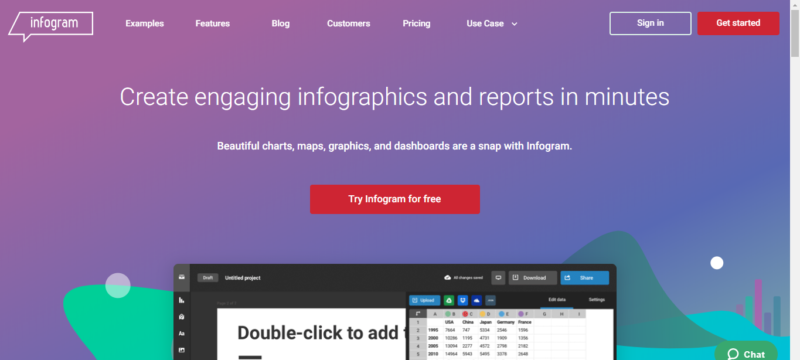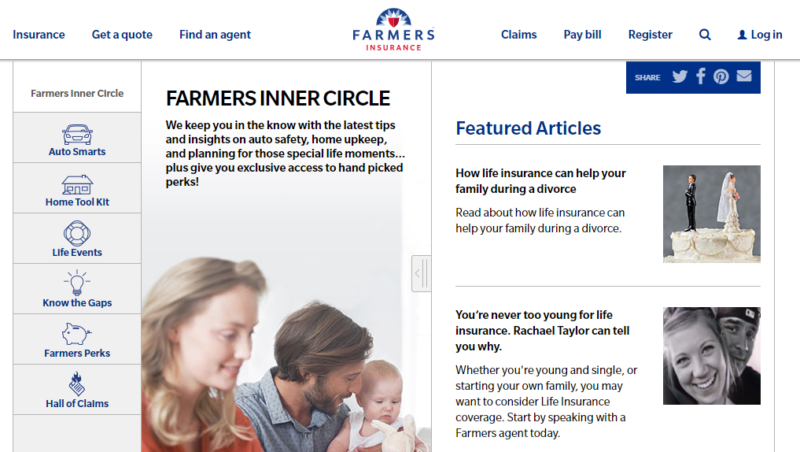
When we think of the words ‘creative content,’ we may immediately picture global campaigns from huge well-known brands: innovators like Walmart, Spotify, and Netflix that shake up the industry and change the game. These juggernauts continue to create iconic content that is justly celebrated and pulls in prestigious awards.
You might be thinking: these campaigns are months in the making, the brainchild of brilliant minds working tirelessly in a huge conglomerate downtown somewhere. I haven’t got the time/team/ideas to get creative with my content!
That’s where you’re wrong.
Just because you haven’t got the resources to run a campaign to rival Google, doesn’t mean that you can’t inject a little excitement into your digital content.
Creativity is subjective and means a lot of different things to different people. While the top companies may consider hiring Martin Scorsese to direct an orange juice commercial an affordable necessity, that doesn’t apply to the rest of us. Instead, simply stepping outside of our comfort zones and utilizing the tools we have available can be enough to ramp up our creative content.
In this piece, I’ll debunk some misconceptions you might have about creative content that you’ll definitely want to avoid.
(Recommended reading: How to Improve Your Website Copy)
1. I haven’t got time to get creative with my content.
So, let’s say you’re a new business, with just a small team. Or perhaps you have no staff and you are the team? You may think that upping creativity will take up too much valuable time. So, until you’ve made your first million, you’ll just stick to the odd Facebook post or blog here and there…
No! Thankfully, there are a whole host of content creation tools that you can use to quickly and easily create engaging content that your audience will love. Here are just a few to get you started:
Giphy
It’s a well-known fact that everyone loves a GIF. Giphy is a free-to-use GIF search engine that lets you scan thousands of GIFs throughout the web to add humor and movement to your social media, blogs, or email marketing.
In 2019, there’s a GIF for every occasion so be sure to find the right one for your content. Don’t go overboard though—too many gifs cheapen your content. Only use ones relevant to the piece in question and avoid risqué or offensive gifs.
Portent Title Maker
When you need to write a blog but can’t think of a title, check out Portent’s content idea generator. It’s a fun tool that can throw up simple titles like: “Great Content in 8 Easy Steps” as well as gems such as “True Facts About Justin Bieber’s Love of Great Content.”
While you might not be able to use all these titles word-for-word, they’re a great starting point to help inspire you and jazz up your content.
Infogram
Using graphs, charts, and infographics is a perfect way to relay complex information in a visually engaging way. Infogram is a free resource that allows you to do so with ease. Featuring 35+ charts and 500+ maps in a host of designs, it’s a great tool that will quickly add value to your content.
Infographics are great for delivering dense data that might otherwise be hard for the everyday user to interpret. Commission some original research and transform it into a slick infographic to deliver value to your audience in an accessible and engaging way.
2. My writing isn’t very good.
Writing is hard, and for some of us just stringing a logical sentence together is an uphill battle. If writing isn’t your thing, you may think that you get a pass when it comes to creating great content.
Wrong.
Content is so much more than writing. Blogging and social posting may be great opportunities to share with your audience, but they’re the tip of the iceberg of the channels open to you. (And don’t forget—you can always outsource blog writing and content production to more talented writers).
Instead of sitting down and writing a blog, record a video blog to share on YouTube. You could also take to social media to get your audience to create it for you with some user-generated content (UGC). Or create a photo story to show, rather than tell and share it across your blog and social media channels.
There are so many possibilities, but my personal favorite is setting up your own podcast. Podcasts are a brilliant, fun and writing-free way of communicating with your audience. They’re cheap to set up and will help you to stand head and shoulders above your competitors.
The ecommerce store builder Shopify is a fine example of this. Its main product is a sophisticated online store builder that makes it easy for individuals to launch their own online biz. But this product is supported by a diverse content strategy that spans multiple formats. Blogs, videos, UGC, podcasts—it’s all here, celebrating successful Shopify entrepreneurs and helping aspiring ones join the fray.
The lesson here? It doesn’t matter if your writing isn’t as good as you want it to be. Find a format that works for you and craft creative content that has impact, not just for your audience, but for you as well.
3. My product is too dull for creativity.
You might think that it’s easy to be creative and exciting when you’re selling fun products like bath bombs and sneakers, but not so much if you’re selling something like office supplies.
And certainly, companies like Lush or Adidas have it easier as their products are already sensually and visually engaging. Their products naturally lend themselves to creativity. But let’s remember that creativity is subjective.
Take Farmers Insurance, a US-based insurance company. Farmers isn’t filling its pages with GIFs or writing blogs about Justin Bieber. But what it does brilliantly is to capture its audience by launching a content hub called the Farmers Inner Circle.
The hub is simple to use, informative, and in keeping with the brand. Farmers posts regularly about a host of subjects, from anticipated blogs about life insurance, to how to winterize your boat.
Without tainting the serious ‘grown up’ ethos of the brand, Farmers has found an engaging way to connect with its audience through creative content.
4. It’s too expensive.
Big brands have huge budgets, with whole teams controlling their content output. If you’re just starting out, trying to replicate bigger brands can prove difficult.
Just because you can’t afford to hire a full-time content producer, doesn’t mean you’re out of luck. It simply requires a little do-it-yourself attitude.
There are loads of great content agencies and copywriters who have affordable starter packages that scale with you as you grow. Be ready to be open and share your story—that’s often more valuable than slick, expensive campaigns anyway.
If you want to write a blog for your business, but don’t know yet how to build or maintain a website, there are plenty of purse-friendly options out there for you. Read up on how to make good, lasting content, and check out different web builders to figure out how to keep content and web development costs down as you scale your creative content efforts. You really don’t want tech to stand in the way of your creativity.
Can’t do video on a budget? Think again! Check out Animoto and Magisto, for simple customized, video editing that you can do on your mobile phone. Embed them on your website and share on social media to improve conversion and engagement rates for a tiny sum.
Though some costs are unavoidable when it comes to building your content plan, there are plenty of affordable resources that are perfect for upping your content game on a budget.
So, forget what you think you know about creative content. It’s not just for the big brands, and it doesn’t have to cost the earth either. Get inspired, shake things up, and your audience will sit up and take notice.
Guest Author: Kayleigh Alexandra of Micro Startups. Micro Startups is dedicated to spreading the word about hard-working solopreneurs and SMEs making waves in the business world. Visit the blog for your latest dose of startup, entrepreneur, and charity insights from top experts around the globe @getmicrostarted.
















